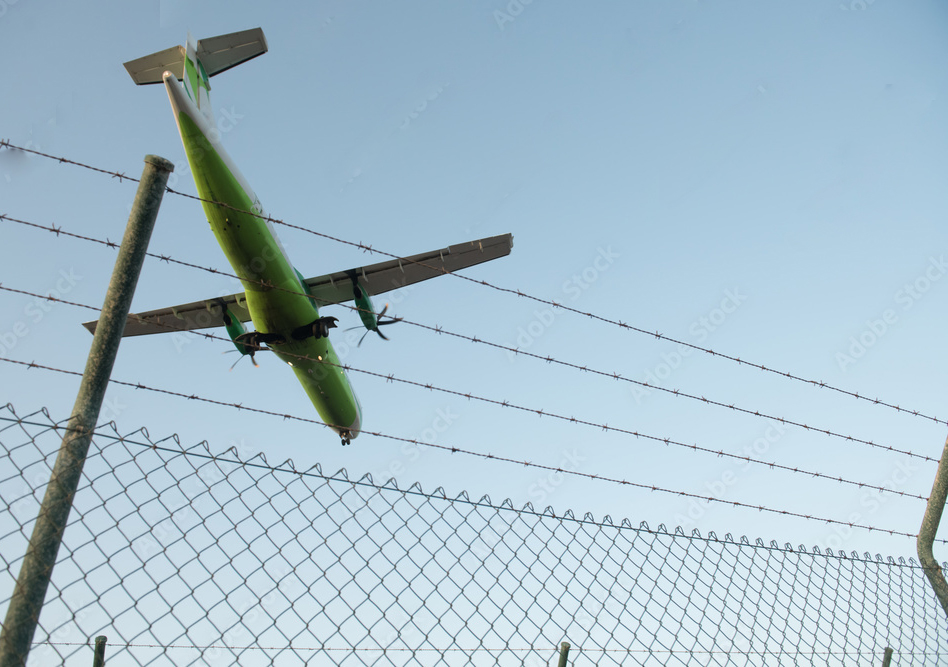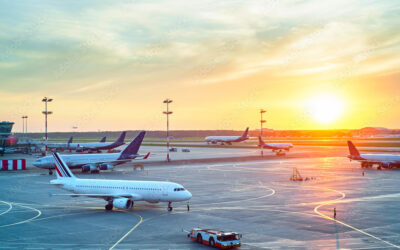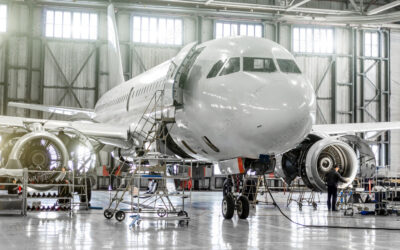The ten largest airports in the U.S. cover more than 117,000 acres, the largest of these being Denver International Airport with 33,530 acres, second only to King Fahd International Airport, in Saudi Arabia. Most top-ranked U.S. airports, in surface area, range from 4,800 to just over 17,000 acres.
Protecting such vast areas is a continuous challenge faced by airports, with the first line of defense being perimeter security. Aside from the extreme threat of terrorism, less obvious intrusions include stowaways, burglars, curious adventurers, and wildlife, all which carry the risk of threatening the operational safety of the airfield. Incursions also happen on runways when people, vehicles, or aircraft are in the protected areas of the airfield surface that is designated for aircraft takeoffs and landings.

A 2019 study by Allianz Global Corporate & Security, based on 51,867 aviation insurance industry claims worth more than US$ 16.3 billion, between 2013 and 2018, revealed that collision or crash incidents account for over one quarter of all claims by number (27%) and for more than half (59%) by value, totaling US$ 9.6 billion. The 470 runway incidents in the study caused US$ 883 million in damages and losses, resulting in an average claim cost of more than US$ 1.9 million.
Damage from foreign object debris and ground collision incidents are two of the key drivers of aviation insurance claims, which are increasing in frequency and severity, with claim costs rising as aircraft values and increased repair costs boost liability awards.
To ensure that airports are meeting regulatory safety requirements, multiple teams of Certification Safety Inspectors conduct annual inspections of an airport’s infrastructure. During the 12 months that separate inspections, airports rely heavily on fixed barriers, such as fences, walls, and gates as well as mobile patrol units that frequently drive along the entire airport perimeter to detect incursions, supported by video surveillance and a variety of sensors.
The adoption of computer vision systems with artificial intelligence are proving effective but the most advanced solutions still have too high a price tag and an unjustifiable total cost of ownership, especially for more than 90% of airports, which are not among the busiest and most profitable operations. The magnitude of ownership costs of such systems is better appreciated when unit costs are multiplied by the immense surface areas and perimeter extensions that airports amass.
With the next-generation solid-state LiDAR technology by BestLidar, an array of sensors placed along the airport perimeter will allow real-time monitoring and deliver intrusion detection and alert integration.
BestLidar’s solid-state Lidar sensor has a powerful reach of 300 meters (close to 1,000 feet) and a broad field of view at 120° (h) by 30° or 60° (v). Without motors and mirrors, no calibrations are required—ever. The 360,000 light beams are uniquely signed and encrypted to ensure authenticity and reliability. Its compact footprint and autonomy support hostile environmental conditions with only a six-watt power requirement.
With the advent of remote digital control towers to ensure operational safety at less active airports, without the costly overhead for on-site infrastructure and staffing, reliable and low-cost Lidar solutions becomes viable with BestLidar’s next-generation Lidar solid-sensor technology.


